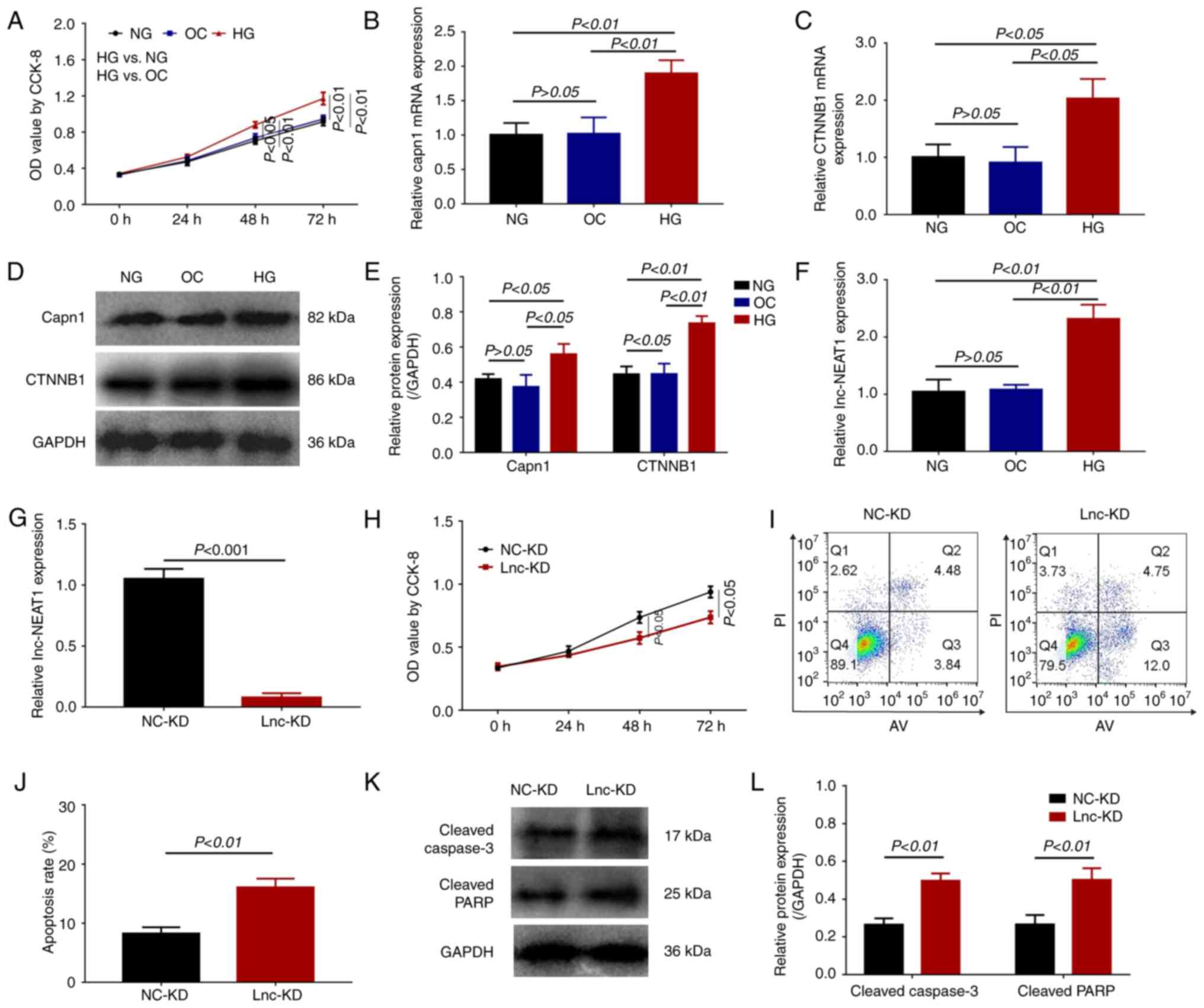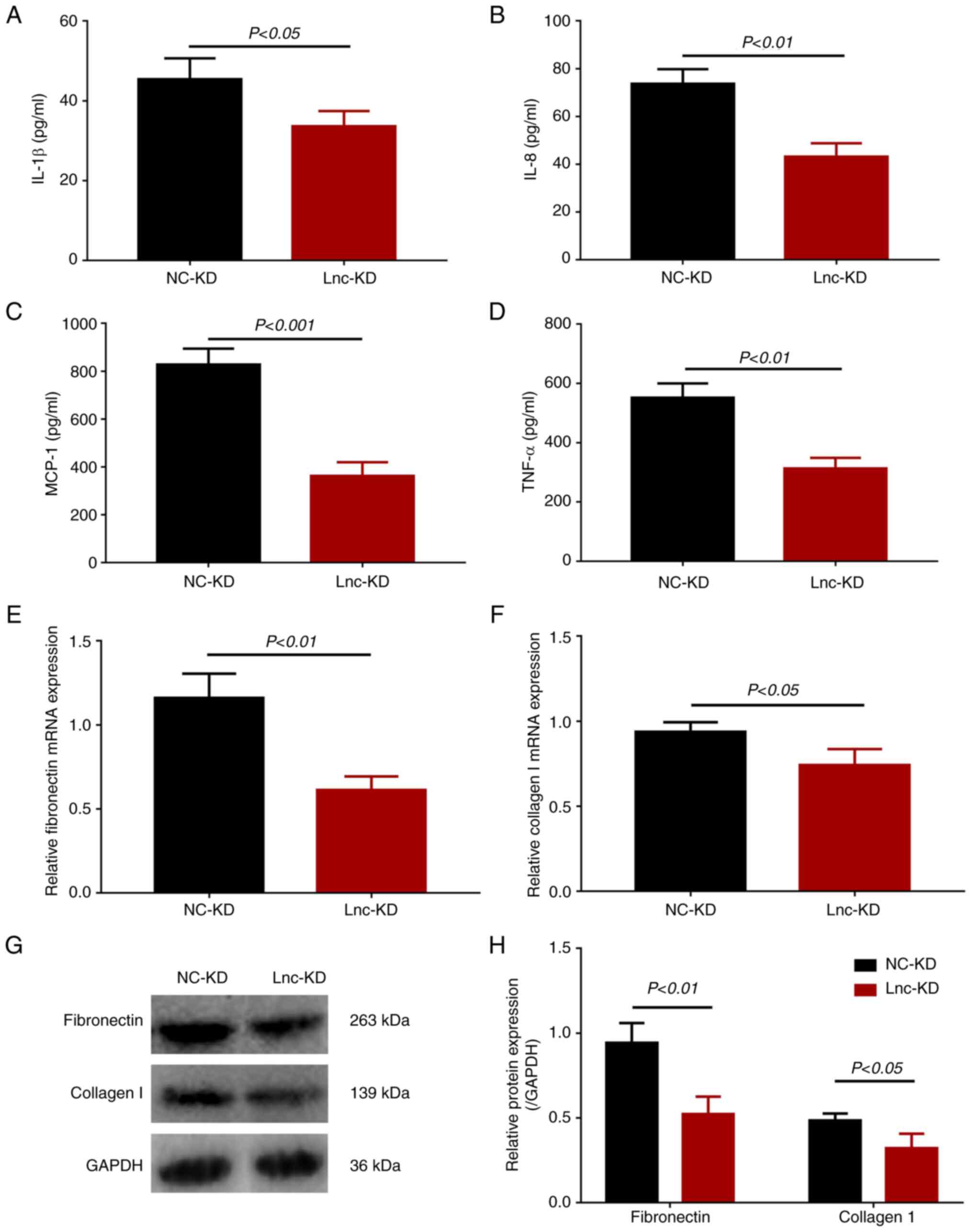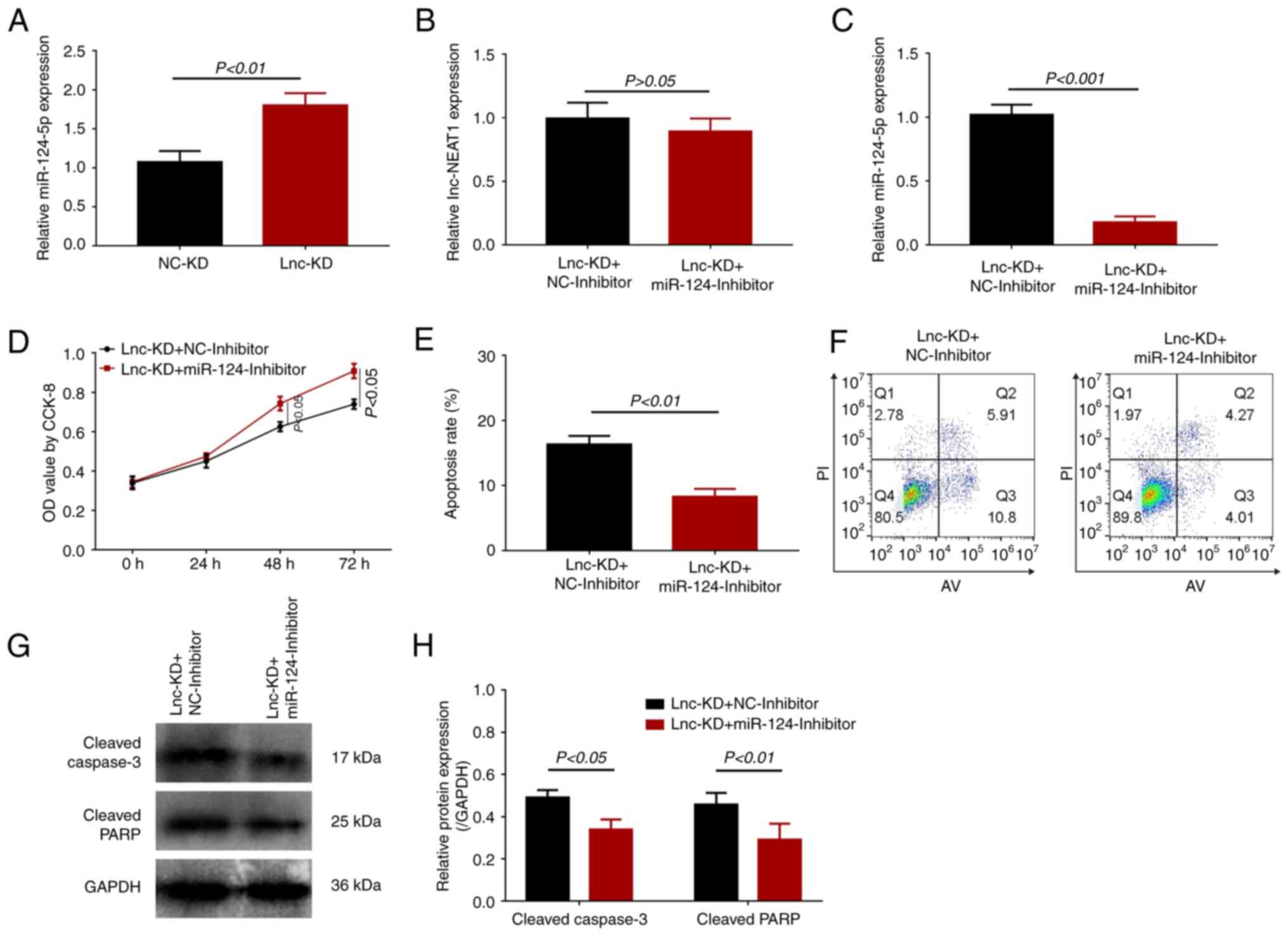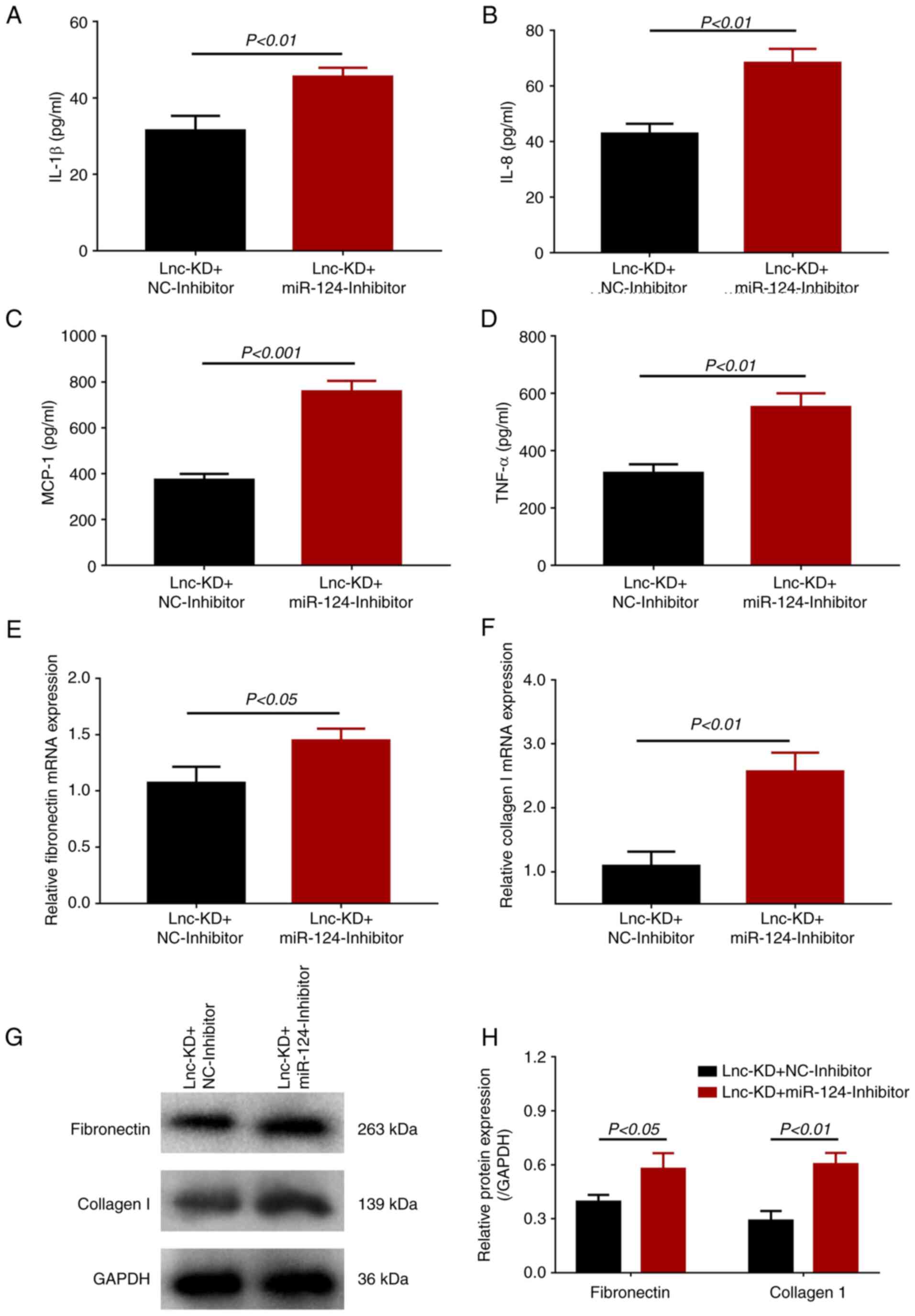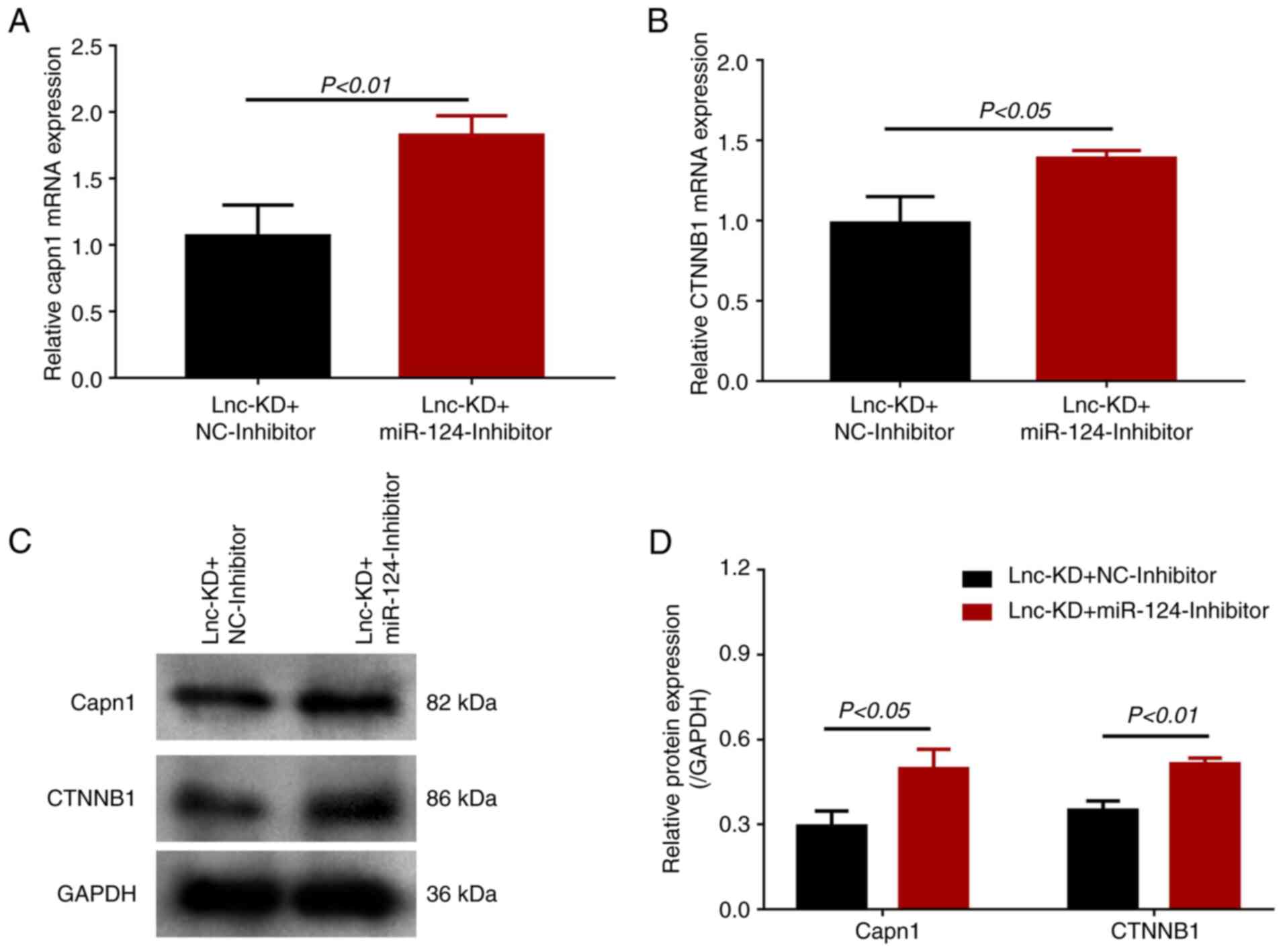|
1
|
Han Q, Zhu H, Chen X and Liu Z:
Non-genetic mechanisms of diabetic nephropathy. Front Med.
11:319–332. 2017.PubMed/NCBI View Article : Google Scholar
|
|
2
|
Szrejder M and Piwkowska A: AMPK
signalling: Implications for podocyte biology in diabetic
nephropathy. Biol Cell. 111:109–120. 2019.PubMed/NCBI View Article : Google Scholar
|
|
3
|
Li Y, Xu K, Xu K, Chen S, Cao Y and Zhan
H: Roles of identified long noncoding RNA in diabetic nephropathy.
J Diabetes Res. 2019(5383010)2019.PubMed/NCBI View Article : Google Scholar
|
|
4
|
Srivastava SP, Goodwin JE, Tripathi P,
Kanasaki K and Koya D: Interactions among long non-coding RNAs and
microRNAs influence disease phenotype in diabetes and diabetic
kidney disease. Int J Mol Sci. 22(6027)2021.PubMed/NCBI View Article : Google Scholar
|
|
5
|
Coellar JD, Long J and Danesh FR: Long
noncoding RNAs and their therapeutic promise in diabetic
nephropathy. Nephron. 145:404–414. 2021.PubMed/NCBI View Article : Google Scholar
|
|
6
|
Chen Y, Qiu J, Chen B, Lin Y, Chen Y, Xie
G, Qiu J, Huasheng H and Jiang D: Long non-coding RNA NEAT1 plays
an important role in sepsis-induced acute kidney injury by
targeting miR-204 and modulating the NF-κB pathway. Int
Immunopharmacol. 59:252–260. 2018.PubMed/NCBI View Article : Google Scholar
|
|
7
|
Ma M, Hui J, Zhang QY, Zhu Y, He Y and Liu
XJ: Long non-coding RNA nuclear-enriched abundant transcript 1
inhibition blunts myocardial ischemia reperfusion injury via
autophagic flux arrest and apoptosis in streptozotocin-induced
diabetic rats. Atherosclerosis. 277:113–122. 2018.PubMed/NCBI View Article : Google Scholar
|
|
8
|
Zhou Y, Deng J, Chu X, Zhao Y and Guo Y:
Role of post-transcriptional control of calpain by miR-124-3p in
the development of Alzheimer's disease. J Alzheimers Dis.
67:571–581. 2019.PubMed/NCBI View Article : Google Scholar
|
|
9
|
Azoulay-Alfaguter I, Yaffe Y, Licht-Murava
A, Urbanska M, Jaworski J, Pietrokovski S, Hirschberg K and
Eldar-Finkelman H: Distinct molecular regulation of glycogen
synthase kinase-3alpha isozyme controlled by its N-terminal region:
Functional role in calcium/calpain signaling. J Biol Chem.
286:13470–13480. 2011.PubMed/NCBI View Article : Google Scholar
|
|
10
|
Lade A, Ranganathan S, Luo J and Monga SP:
Calpain induces N-terminal truncation of β-catenin in normal murine
liver development: Diagnostic implications in hepatoblastomas. J
Biol Chem. 287:22789–22798. 2012.PubMed/NCBI View Article : Google Scholar
|
|
11
|
Potz BA, Sabe AA, Elmadhun NY, Clements
RT, Abid MR, Sodha NR and Sellke FW: Calpain inhibition modulates
glycogen synthase kinase 3β pathways in ischemic myocardium: A
proteomic and mechanistic analysis. J Thorac Cardiovasc Surg.
153:342–357. 2017.PubMed/NCBI View Article : Google Scholar
|
|
12
|
Liu Y, Liu B, Zhang GQ, Zou JF, Zou ML and
Cheng ZS: Calpain inhibition attenuates bleomycin-induced pulmonary
fibrosis via switching the development of epithelial-mesenchymal
transition. Naunyn Schmiedebergs Arch Pharmacol. 391:695–704.
2018.PubMed/NCBI View Article : Google Scholar
|
|
13
|
Muniappan L, Javidan A, Jiang W,
Mohammadmoradi S, Moorleghen JJ, Katz WS, Balakrishnan A, Howatt DA
and Subramanian V: Calpain inhibition attenuates adipose tissue
inflammation and fibrosis in diet-induced obese mice. Sci Rep.
7(14398)2017.PubMed/NCBI View Article : Google Scholar
|
|
14
|
Zhao YL, Li JB, Li YJ, Li SJ, Zhou SH and
Xia H: Capn4 promotes esophageal squamous cell carcinoma metastasis
by regulating ZEB1 through the Wnt/β-catenin signaling pathway.
Thorac Cancer. 10:24–32. 2019.PubMed/NCBI View Article : Google Scholar
|
|
15
|
Hu W, Han Q, Zhao L and Wang L: Circular
RNA circRNA_15698 aggravates the extracellular matrix of diabetic
nephropathy mesangial cells via miR-185/TGF-β1. J Cell Physiol.
234:1469–1476. 2019.PubMed/NCBI View Article : Google Scholar
|
|
16
|
Livak KJ and Schmittgen TD: Analysis of
relative gene expression data using real-time quantitative PCR and
the 2(-Delta Delta C(T)) method. Methods. 25:402–408.
2001.PubMed/NCBI View Article : Google Scholar
|
|
17
|
Gao J, Wang W, Wang F and Guo C:
LncRNA-NR_033515 promotes proliferation, fibrogenesis and
epithelial-to-mesenchymal transition by targeting miR-743b-5p in
diabetic nephropathy. Biomed Pharmacother. 106:543–552.
2018.PubMed/NCBI View Article : Google Scholar
|
|
18
|
Hu M, Wang R, Li X, Fan M, Lin J, Zhen J,
Chen L and Lv Z: LncRNA MALAT1 is dysregulated in diabetic
nephropathy and involved in high glucose-induced podocyte injury
via its interplay with β-catenin. J Cell Mol Med. 21:2732–2747.
2017.PubMed/NCBI View Article : Google Scholar
|
|
19
|
Long J and Danesh FR: Values and
limitations of targeting lncRNAs in diabetic nephropathy. Diabetes.
67:552–553. 2018.PubMed/NCBI View Article : Google Scholar
|
|
20
|
Alvarez ML, Khosroheidari M, Eddy E and
Kiefer J: Role of microRNA 1207-5P and its host gene, the long
non-coding RNA Pvt1, as mediators of extracellular matrix
accumulation in the kidney: Implications for diabetic nephropathy.
PLoS One. 8(e77468)2013.PubMed/NCBI View Article : Google Scholar
|
|
21
|
Zou G, Zhong W, Wu F, Wang X and Liu L:
Catalpol attenuates cardiomyocyte apoptosis in diabetic
cardiomyopathy via Neat1/miR-140-5p/HDAC4 axis. Biochimie.
165:90–99. 2019.PubMed/NCBI View Article : Google Scholar
|
|
22
|
Huang S, Xu Y, Ge X, Xu B, Peng W, Jiang
X, Shen L and Xia L: Long noncoding RNA NEAT1 accelerates the
proliferation and fibrosis in diabetic nephropathy through
activating Akt/mTOR signaling pathway. J Cell Physiol.
234:11200–11207. 2019.PubMed/NCBI View Article : Google Scholar
|
|
23
|
Yu F, Jiang Z, Chen B, Dong P and Zheng J:
NEAT1 accelerates the progression of liver fibrosis via regulation
of microRNA-122 and Kruppel-like factor 6. J Mol Med (Berl).
95:1191–1202. 2017.PubMed/NCBI View Article : Google Scholar
|
|
24
|
Chen J, Cui L, Yuan J, Zhang Y and Sang H:
Circular RNA WDR77 target FGF-2 to regulate vascular smooth muscle
cells proliferation and migration by sponging miR-124. Biochem
Biophys Res Commun. 494:126–132. 2017.PubMed/NCBI View Article : Google Scholar
|
|
25
|
Gong Q, Xie J, Liu Y, Li Y and Su G:
Differentially expressed microRNAs in the development of early
diabetic retinopathy. J Diabetes Res. 2017(4727942)2017.PubMed/NCBI View Article : Google Scholar
|
|
26
|
Li XY, Zhang YQ, Xu G, Li SH and Li H:
miR-124/MCP-1 signaling pathway modulates the protective effect of
itraconazole on acute kidney injury in a mouse model of
disseminated candidiasis. Int J Mol Med. 41:3468–3476.
2018.PubMed/NCBI View Article : Google Scholar
|
|
27
|
Zhao MY, Wang GQ, Wang NN, Yu QY, Liu RL
and Shi WQ: The long-non-coding RNA NEAT1 is a novel target for
Alzheimer's disease progression via miR-124/BACE1 axis. Neurol Res.
41:489–497. 2019.PubMed/NCBI View Article : Google Scholar
|
|
28
|
He F, Zhang C and Huang Q: Long noncoding
RNA nuclear enriched abundant transcript 1/miRNA-124 axis
correlates with increased disease risk, elevated inflammation,
deteriorative disease condition, and predicts decreased survival of
sepsis. Medicine (Baltimore). 98(e16470)2019.PubMed/NCBI View Article : Google Scholar
|
|
29
|
Ren X, Zhu R, Liu G, Xue F, Wang Y, Xu J,
Zhang W, Yu W and Li R: Effect of sitagliptin on tubulointerstitial
Wnt/β-catenin signalling in diabetic nephropathy. Nephrology
(Carlton). 24:1189–1197. 2019.PubMed/NCBI View Article : Google Scholar
|
|
30
|
Wang Y, Xiang K, Zheng T, Jia W, Shen K
and Li J: The UCSNP44 variation of calpain 10 gene on NIDDM1 locus
and its impact on plasma glucose levels in type 2 diabetic
patients. Zhonghua Yi Xue Za Zhi. 82:613–616. 2002.PubMed/NCBI(In Chinese).
|















